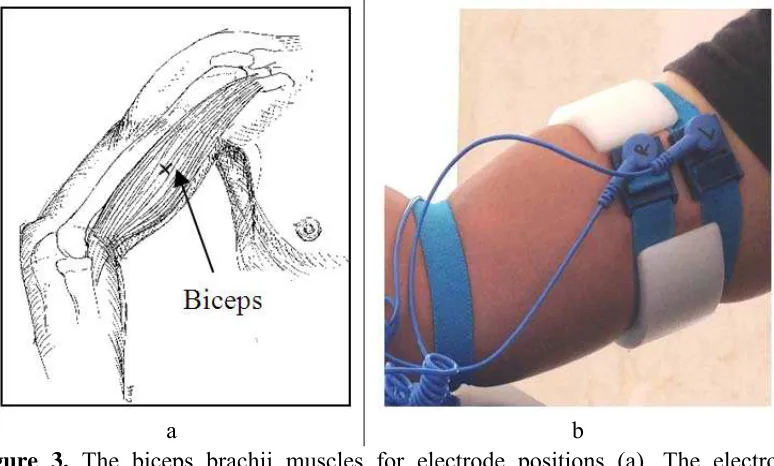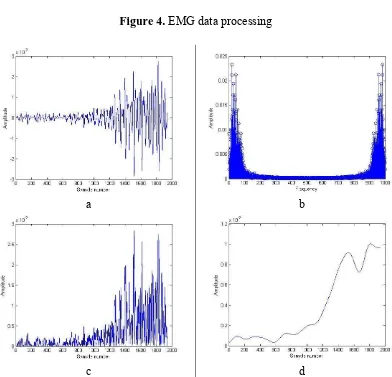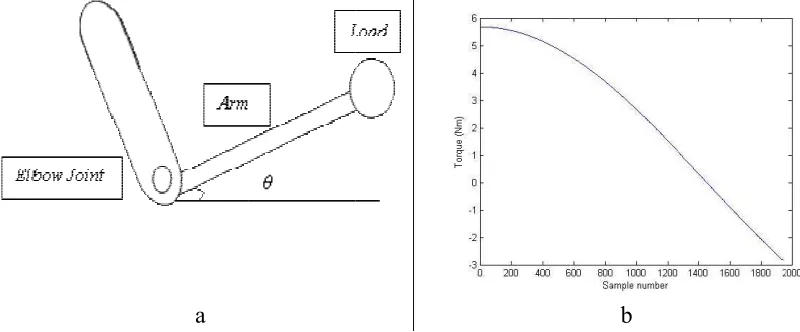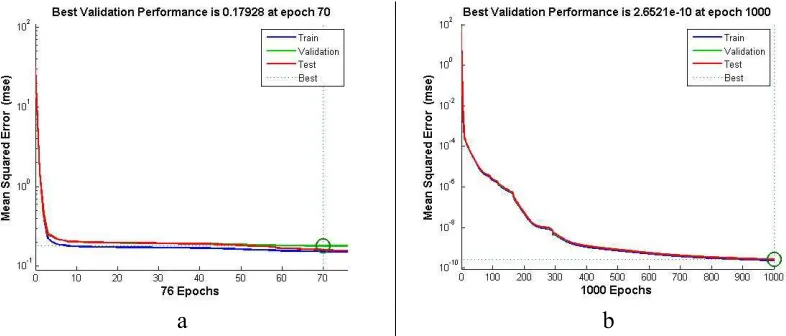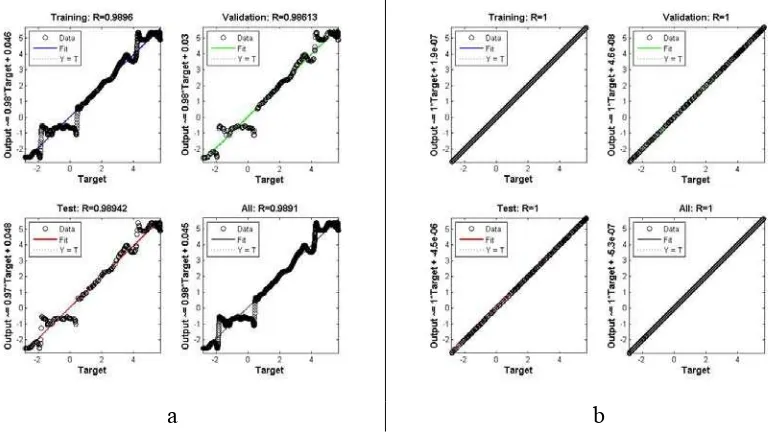International Journal of Applied Engineering Research
ISSN 0973-4562 Volume 9, Number 10 (2014) pp. 1289-1301 © Research India Publications
http://www.ripublication.com
Comparative Study of EMG based Joint Torque Estimation
ANN Models for Arm Rehabilitation Device
M. H. Jali1, a, M. F. Sulaima1, b, T. A. Izzuddin1, c, W. M. Bukhari1, d and M. F. Baharom1, e
1
Faculty of Electrical Engineering, Universiti Teknikal Malaysia Melaka Hang Tuah Jaya, 76100 Malacca, Malaysia
a
[email protected], [email protected], [email protected],
d
[email protected], [email protected]
Abstract
1290 M. H. Jali et al Keywords - Electromyography, Artificial Neural Network, Arm Rehabilitation Device, Joint Torque Estimation, Exoskeleton
1. Introduction
Human support system is endoskeleton. Endoskeleton plays a role as a framework of the body which is bone. Our daily movements are fully depends on the functionality of our complex systems in the body. The disability one or more of the systems in our body will reduce our physical movements. The assistive device is a need for rehab as an exoskeleton. The functionality of the rehabilitation device has to smooth as the physical movement of normal human.
The rehabilitation programs provide the suitable program for conducting the nerve and stimulate the muscles. People who have temporary physical disability have the chances to recover. Nowadays, rehabilitation program are using exoskeleton device in their tasks. The functionality of exoskeleton depends on muscle contraction. Electromyogram studies help to facilitate the effectiveness of the rehabilitation device by analysing the signal transmitted from the muscle.
The technique of measuring electrical activity that produced from the muscles during rest or contractions known as electromyography (EMG). The electric signal generates from the brain and sends to the muscles via motor neuron. The EMG may detect the dysfunctional of the muscles or failure in signal transmission from nerve to muscle. The failure of sending the electrical signal from the brain requires electrical stimulation from the external source to muscles. Electrodes are used for signal detection of electrical activity in muscles. The study of this electrical activity is important for combination of electromyogram and rehabilitation device.
The rehabilitation device is a tool that used to help the movements for daily life activities of the patients who suffer from the failure of muscle contractions, due to the failure of the muscles contractions the movements is limited. The ability of the patients to do the tasks in the rehabilitation programs need to be measured. The rehabilitation programs have to assure whether the tasks will cause effective or bring harm to the patients [1].
Historically, the rehabilitation tasks have been avoided due to a belief that it would increase spasticity [2]. In this research, the analysis of the data will be focusing on upper limb muscles contraction consisting of biceps muscles only. The experiment is limited to the certain of upper limb movements that use in training. EMG is a division of bio signal; the bio signal analysis is the most complex analysis. Thus, the signal analysis is a complicated process that has to be through many phases of analysis [3].
Comparative Study of EMG based Joint Torque Estimation ANN Models 1291
improving their quality of life [5]. The joint torque is estimated from EMG signals using Artificial Neural Network [6]. The BPNN is used to find a solution for EMG-joint torque mapping. The EMG signal of the biceps brachii muscle act as the input of the ANN model whiles the desired torque act as the ideal output of the model. Hence the EMG signals considered the ‘intent’ of the system while the joint torque is the ‘controlled’ variable for the arm rehabilitation device [7]. There are several work that has applied BPNN for modeling the muscle activity of ankle to joint torque relationship. It is done by approximating the force from the EMG signal under static conditions [7]. The network is evaluated based on the best linear regression between the actual joint torque and the estimated joint torque [4].
2. Methods
Figure 1 shows a block diagram of our research that consists of two major phases. First phase is EMG data processing and desired torque determination. Second phase is the ANN construction and testing. The data collection from the first phase is used to validate and teach the ANN algorithm in second phase.
Figure 1. Research methods
2.1 Experimental Setup
Implementation of arm rehabilitation device based on movement is recorded from the EMG signal of healthy subjects. From the human anatomy studies, different angle movements of upper limb with elbow as the reference is depends on relation of agonist and antagonist. In this study is focusing on the behaviour of biceps muscle as agonist and the triceps as the antagonist respectively. Muscle that involved in this movement is biceps and triceps, however in this study to understand the electrical activity during muscle contraction, the biceps is the only muscle that taking into account. The movements’ ranges in between position of arm flexion until arm fully extend.
Comparative Study of EMG based Joint Torque Estimation ANN Models 1293
motor unit. This ensured the detecting surface intersects most of the same muscle on subject as in Figure 3(a) at the biceps brachii, and as a result, an improved superimposed signal is observed. Reference electrode has to be at the bone as the ground, for this experiment it placed at elbow joint as shown in Figure 3(b). These electrodes are connected to the combination of hardware Olimex EKG-EMG-PA and Arduino Mega for data collection.
a b Figure 3. The biceps brachii muscles for electrode positions (a), The electrode
placements on subject skin (b)
2.2 EMG data processing
1294 M. H. Jali et al
Figure 4. EMG data processing
a b
c d Figure 5. Raw EMG signal (a), Power Spectral Density (b), Rectified signal (c),
Smooth signal (d)
2.3 Desired Torque
1296 M. H. Jali et al The input signal is propagated forward through network layer using back propagation algorithm. An array of predetermined input is compared with the desired output response to compute the value of error function. This error is propagated back through the network in opposite direction of synaptic connections. This will adjust the synaptic weight so that the actual response value of the network moved closer to the desired response [11]. BPNN has two-layer feed-forward network with hidden neurons and linear output neurons. The function used in the hidden layer of network is sigmoid function that generates values in range of -1 to 1 [8]. There are layers of hidden processing units in between the input and output neurons. For each epoch of data presented to the neural network, the weights (connections between the neurons) and biases are updated in the connections to the output, and the learned error between the predicted and expected output, the deltas, is propagated back through the network [12].
A Lavenberg-Marquardt training back propagation algorithm is implemented for this work to model the EMG to torque signal. Two ANN models is considered to compare the performance of each model. ANN model 1 consist of input layer with single node which is denoted as b that represent EMG signal from biceps while ANN model 2 has additional node at the input layer which denoted as t that represent the movement time which act as a training data. The output layer has only one node which is denoted as τ that represents the desired torque act as a target data. Table I describe the difference between the models and the network structure of each model is shown in Figure 7[4]. The network was trained using 1839 sets of EMG data for arm flexion motion from 00 angles to 1200 angle. It also has output data which is torque of correspondent arm motion. The training process was iteratively adjusted to minimize the error and increased the rate of network performance [10]. MATLAB software is used to construct the BPNN network. The network requires data for learning and testing in order to determine the weights each node uses. The training has been done by dividing the input data of 70% for training, 15% for validation and 15% for testing [9]. The network will be trained until the following condition fulfilled before it stop [10]: -
• reach maximum number of epochs
• gradient performance became less than the minimum gradient
Comparative Study of EMG based Joint Torque Estimation ANN Models 1297
Table 1. ANN model description
ANN model Model 1 Model 2
No. of input node 1 2
Node 1 EMG data, b EMG data, b Node 2 Movement time, t - Hidden neurons
Output node
10 Desired torque, τ
10 Desired torque, τ
The performance evaluation of the network is based on the Mean Squared Error (MSE) of the training data and Regression (R) between the target outputs and the network outputs as well as the characteristics of the training, validation, and testing errors. The network is considered has the best performance if it has lowest MSE and highest R while exhibit similar error characteristics among the training, validation and testing. However even if the MSE shows very good result but the validation and testing vary greatly during the training process, the network structure is still considered unsatisfactory because the network is not generalized. Therefore further tuning and training need to be conducted in order to improve the network performance [10].
a b Figure 7. (a) Model 1, (b) Model 2
3. Experimental Results & Discussion
1298 M. H. Jali et al Both results show that the MSE has decreased rapidly along the epochs during training. The regression for Model 1 is 0.989 while 1.000 for Model 2. Figure 9(b) shows that Model 2 produces better curve fitness for training, test and validation data around compare to Model 1 as shown in Figure 9(a) [9][13].
a b Figure 8. (a) Best validation performance Model 1, (b) Best validation performance
Model 2
Error sizes are well distributed if most error approaching zero values that make the trained model performs better. Figure 10(a) shows that Model 1 has maximum instance around 450 of MSE distributed around the zero line of the error histogram while Figure 10(b) shows that Model 2 has maximum instance around 700 of MSE distributed around zero line [13].
Comparative Study of EMG based Joint Torque Estimation ANN Models 1299
a b Figure 9. (a) Regression of the trained Model 1, (b) Regression of the trained Model
2
a b Figure 10. (a) Error histogram of the trained Model 1, (b) Error histogram of the
1300 M. H. Jali et al
a b Figure.11 (a) Error fluctuation along zero line, (b) Target vs trained network output
Table 2. Summary of the result
BPNN Structure Model 1 Model 2
Stop Epochs 70 1000
Regression 0.9891 1
MSE 0.17928 2.6521e-10
Time Elapsed (Seconds) 0.04 1.00
Conclusions
Based on the result, it can be concluded that the ANN Model 2 has better performance in term of MSE and R compare to ANN Model 1. Model 2 has a super low MSE value as well as perfect result for R. However the stop epochs and time elapsed for Model 2 is worse than Model 1. The computational time for Model 2 consume a longer time which is 1.00 seconds compare to Model 1 that required only 0.04 seconds. Therefore there is tradeoff between these models. In order to improve the Model 2 stop epochs and time elapsed, evolution neural network training algorithm such as genetic algorithm and particle swarm optimization can be implemented to produce a good mean squared error and regression performance result while reducing the computational time. Model 2 is considering a good performance as it shows that this ANN model can well represent the relationship between EMG signals and elbow joint torque. Hence this model can be used for motor torque control of the arm rehabilitation devices.
Acknowledgements
Comparative Study of EMG based Joint Torque Estimation ANN Models 1301
References
[1] S. D. C. G. C. Louise Ada.: Strengthening Interventions Increase Strength and Improve Activity After Stroke: A Systematic Review. Australian Journal of Physiotherapy, vol. 52, pp. 241-248, 2006.
[2] B. B.: Adult Hemiplegia: Evaluation and treatment..Oxford, Butterworth-Heinemann., 1990.
[3] J. Muthuswamy.: Biomedical Signal Analysis in Standard Handbook Of Biomedical Engineering And Design. Mc-Graw Hill, 2004, pp. 18.1 - 18.30. [4] Li Dapeng, Zhang Yaxiong.: Artificial Neural Network Prediction of Angle
Based on Surface Electromyography. International Conference on Control, Automation and Systems Engineering (CASE).pp. 1-3, 2011.
[5] M. B. I. Reaz, M. S. Hussain, and F. Mohd-Yasin.: Techniques of EMG Signal Analysis: Detection, Processing, Classification and Applications. Biological Procedures Online, vol. 8, pp. 11-35, 2006.
[6] Morita, S. Kondo, T. Ito, K.: Estimation of Forearm Movement from EMG Signal and Application to Prosthetic Hand Control, IEEE International Conference on Robotics and Automation(ICRA).vol.4.pp.3692-36972. 2001. [7] Kent, L.M. Siegler, S. Guez, A. ; Freedman, W..: Modelling Of Muscle EMG
To Torque By The Neural Network Model Of Backpropagation . IEEE International Conference of the Engineering in Medicine and Biology Society, Proceedings of the Twelfth Annual. Pp 1477-1478.1990.
[8] Favieiro, G.W. Balbinot, A. Barreto, M.M.G.: Decoding Arm Movements by Myoeletric Signals and Artificial Neural Networks. Conference of Biosignals and Biorobotics(BRC). pp 1-6. 2011.
[9] Naeem, U.J. Abdullah, A.A. ; Caihua Xiong.: Estimating human arm's muscle force using Artificial Neural Network . IEEE International Symposium on Medical Measurements and Applications Proceedings (MeMeA), pp 1-6.2012 [10] Ahsan, M.R. ; Ibrahimy, M.I. ; Khalifa, O.O. EMG Motion Pattern
Classification through Design and Optimization of Neural Network. International Conference on Biomedical Engineering (ICoBE), pp 175-179.2012
[11] B. Hudgins, P. Parker, and R. Scott.: A new strategy for multifunction myoelectric control. IEEE Trans. Biomed. Eng., vol. 40, no. 1, pp. 82– 94, Jan. 1993.
[12] Mars, P, Chen JR, Nambiar, R Learning Algorithms.: Theory and applications in signal processing, control and communications. CRC 1996.

